The ability to have a constant supply of fresh eggs is, for many people, the primary motivation for keeping chickens in their backyards. It is essential to have knowledge of the chicken breeds that produce a large number of eggs.
The vast majority of newbies are unaware of the fact that the breed of chicken you purchase has a significant bearing on the average number of eggs that can be expected each day.
Some chicken breeds for eggs, such as Japanese Bantams, are not known for their ability to produce eggs, whereas Hybrid hens are capable of producing more than 280 eggs in a single year, which is equivalent to nearly one egg per day.
Here Is the List of Best Egg Laying Chickens
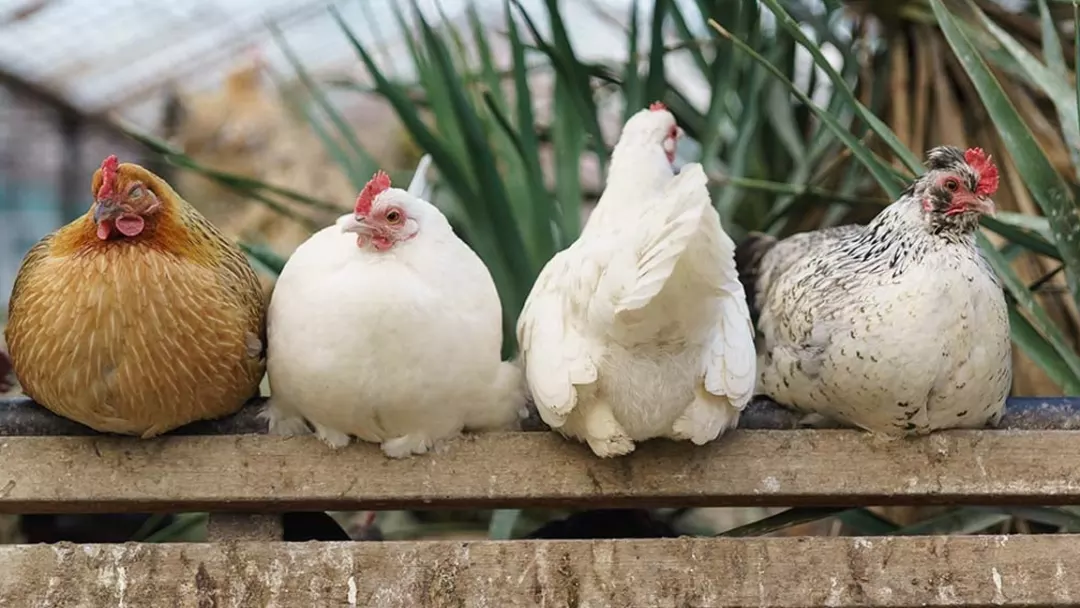
If you want to have access to fresh eggs throughout the year, picking the right breed of chicken is essential; consequently, we have compiled a list of the best egg laying chickens that we consider to be the best overall.
Rhode Island Red
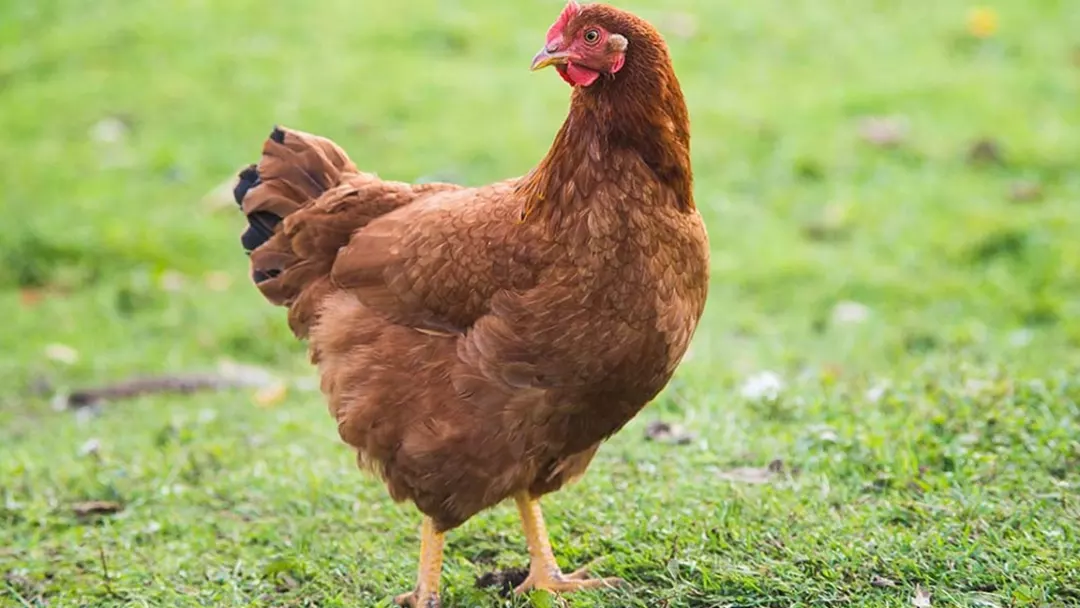
The American breed of chicken known as Rhode Island Reds can be used for both meat and eggs. What this means is that chickens can be raised for both eggs and meat. Due to their resilience and prolific egg production, they have become a favorite among backyard poultry enthusiasts.
- They can take care of themselves and have a reputation for being tough. Because of its sociability, Rhode Island is often the chicken of choice for new keepers.
- You can count on a young Rhode Island Red to produce 250 eggs per year. The size and color of these eggs fall somewhere in the middle.
- Rhode Island Reds, despite the name, are quite dark because their feathers mix brown and black.
Hybrid
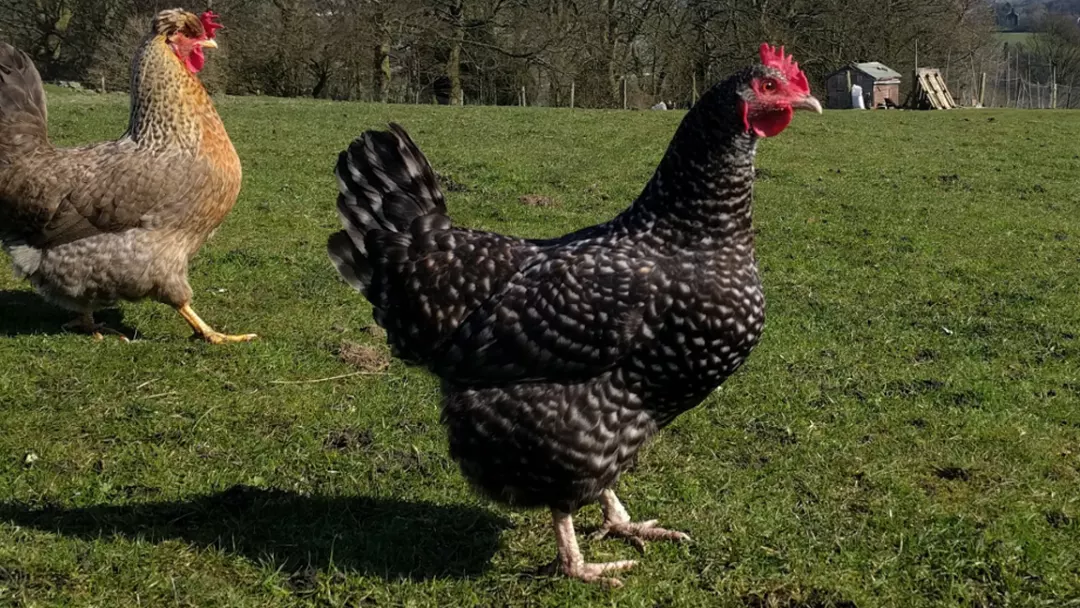
The Golden Comet is one of many popular hybrid breeds. These hybrids have been selectively bred to produce an abundance of eggs on a comparatively meager diet. In comparison to other chicken breeds for eggs, this lower feeding costs significantly.
- Hybrids typically have a golden-brown body with white, fluffy tail feathers.
- An average hybrid hen will produce about 280 eggs per year. Brown in color, these eggs will be of moderate size.
- They’re not easily frightened or stressed and rarely get broody. Hybrid chickens are the best option if you want a reliable egg source throughout the year with minimal maintenance.
Marans
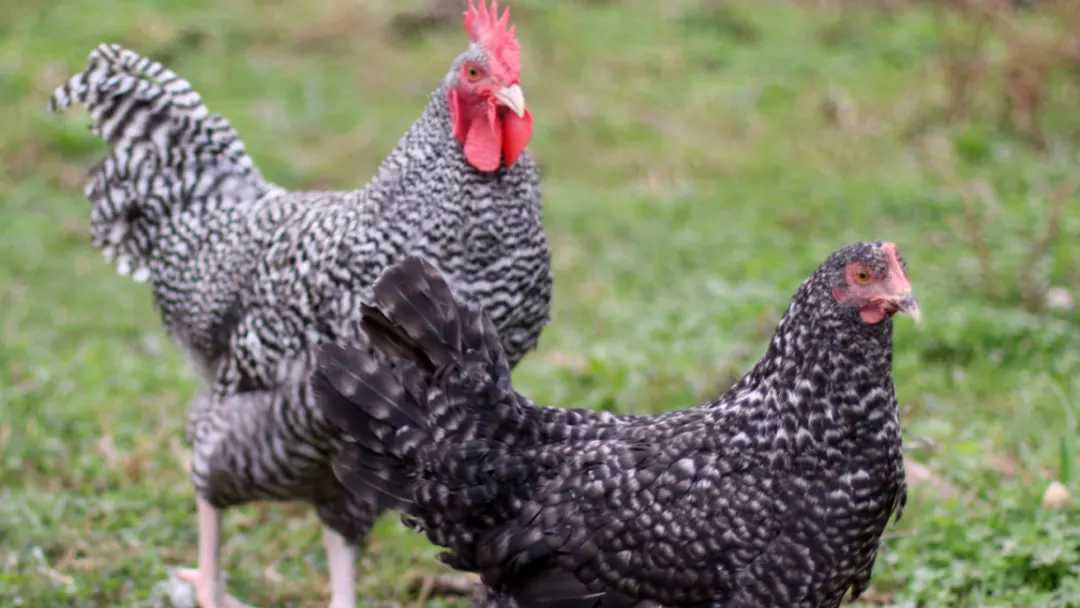
The Marans are another type of dual-purpose hen, prized for both their beautiful dark brown eggs and high-quality meat.
- In a normal year, a female Maran will produce about 200 eggs. The size and color of these eggs are about right. They’re a medium dark brown.
- They share a lot of physical characteristics with Plymouth Rocks, including a mostly dark grey color scheme with white flutters.
- Marans are docile hens that don’t need a lot of space to roam. Unfortunately, this also means they aren’t particularly docile and won’t make good pets.
Leghorn
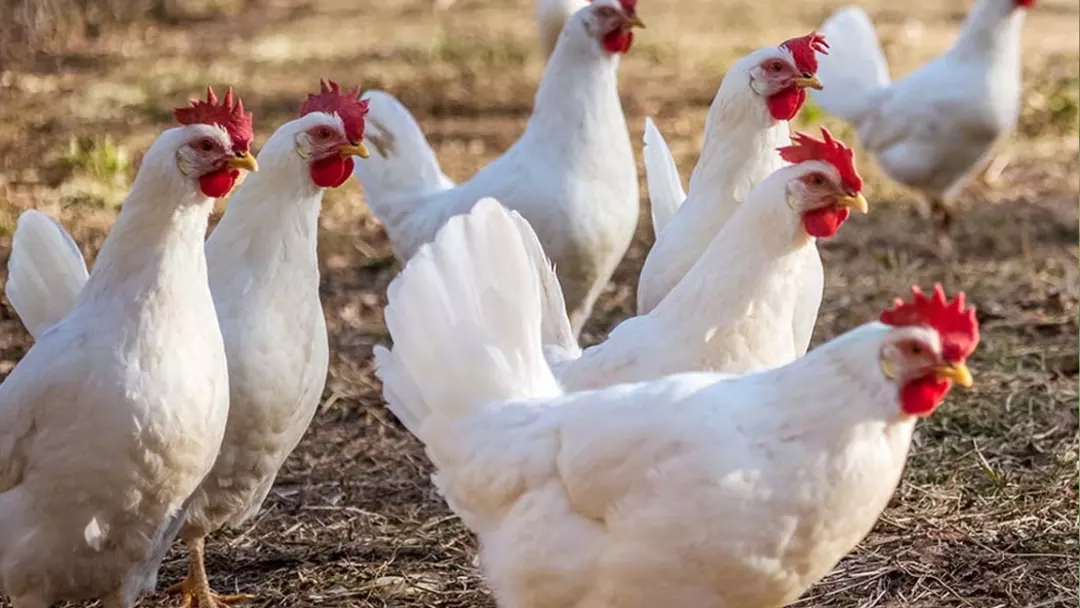
Anyone who was a child in the 50s or 60s and watched the popular television show Foghorn Leghorn will be able to describe what a Leghorn looks like.
Leghorns were first brought to the United States from Italy in the 1800s, and ever since then, they have proven to be the ideal chicken for keeping in a backyard coop.
- They have a full white body and a large, thick red comb, making them one of a kind among existing breeds.
- A healthy female should produce about 250 eggs per year. The size and color of these eggs, white in color, are considered average.
- Leghorns are a good choice for a beginner, but if you want to tame your chickens, you shouldn’t get them because they’re so timid and unfriendly.
Plymouth Rock
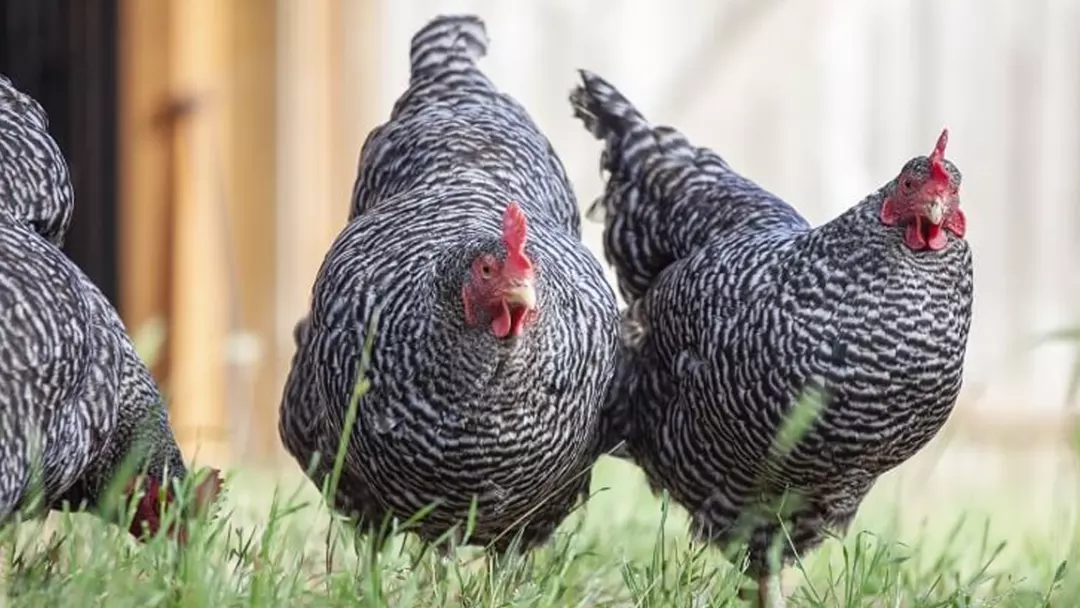
If you are new to keeping chickens and are looking for a hen that lays an egg approximately once every two days, the Plymouth Rock, also known as the Barred Rock, is an excellent choice.
- Grey dominates their appearance, and white stripes run the length of their body.
- Large Character Plymouths thrive in the freedom of the open range. They, too, are sociable and easily domesticated, just like the Sussex.
- About 200 eggs per year is what a healthy Plymouth Rock lays. Eggs of this size and color range are typically between small and medium in size and have a light brown hue.
Ancona
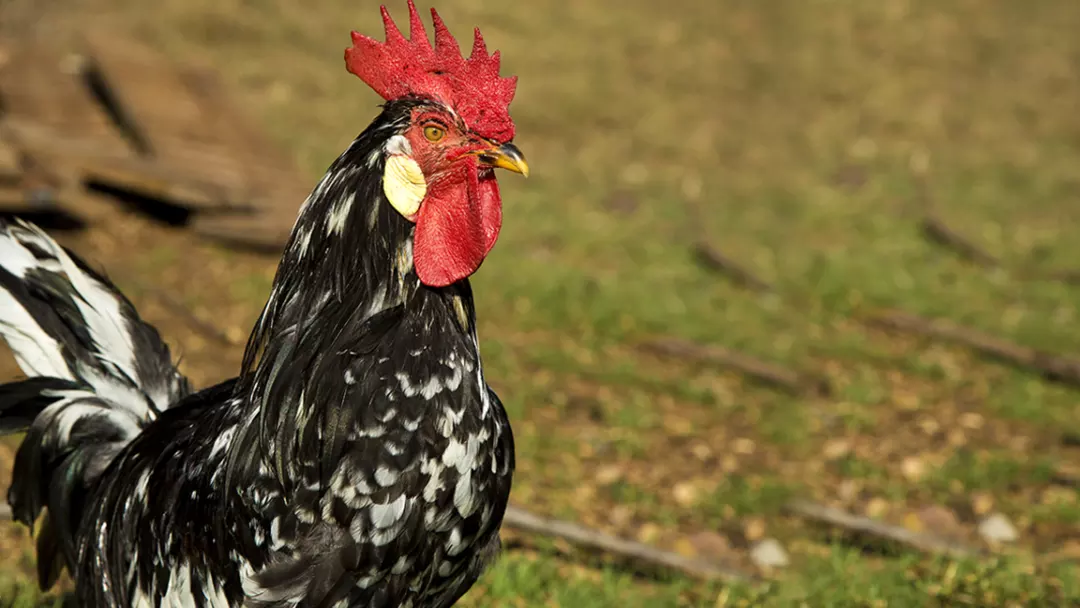
The Ancona is a breed of small hen that was first domesticated in Italy but can now be found in much greater numbers in the United Kingdom and the United States.
- About 200 eggs are produced annually. These eggs will be on the smaller side and white in color.
- The feathery appearance is strikingly similar to that of Plymouth Rock, though its size is less than half that of the latter.
- It’s not recommended that you bring home an Ancona. It’s flighty and needs its feathers clipped regularly because it constantly escapes from chicken pens.
Easter Eggers
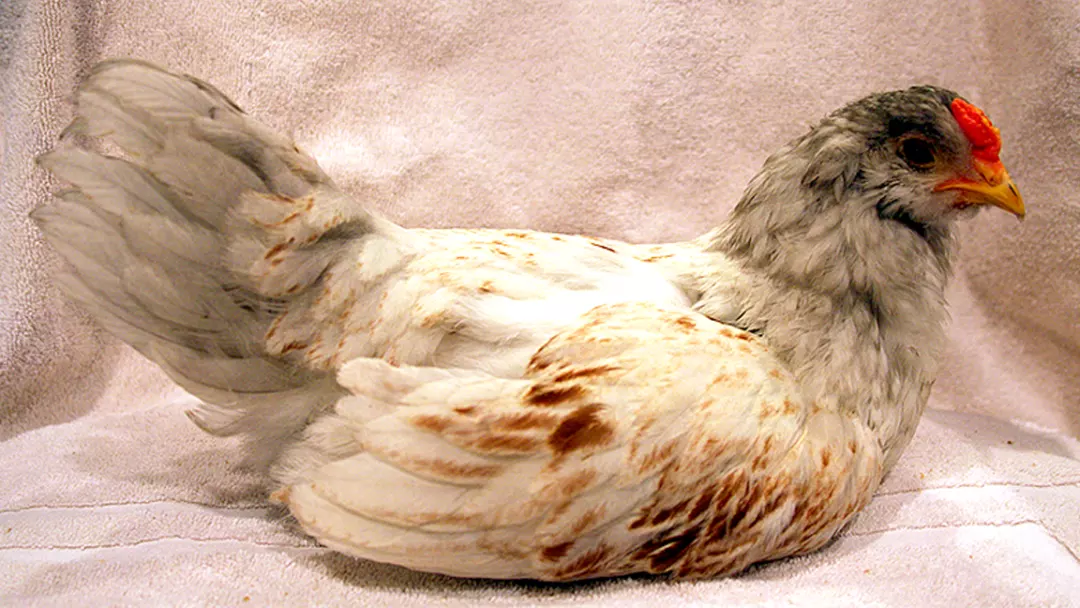
Despite being a hybrid, Easter Eggers should be recognized as a distinct group. If you’re looking for a source of an abundance of blue eggs, look no further than these intelligent hens.
- A typical Easter Egger will lay 250 eggs per year. They come in sizes ranging from moderate to massive. In fact, they can range from a sage greenish blue to a clear sky blue. Beautiful springtime embellishment!
- Easter hens are generally seen as more sociable than other hens. Also, their personalities run the gamut. For the same reason, they are able to elude their predators.
There is a wide color palette of Easter Eggers to choose from. Their feathers are typically a shade of brown with various colored speckles. They are popular among those who prefer their chickens to roam free because of their hawklike appearance. The beards of EEs, which often have a different color scheme than the rest of the birds, are also distinctive.
What should be the best diet for chicken breeds for eggs?
Chickens can eat just about anything. Grain, fruit, vegetable, and insect are among their staple foods. Chickens typically require a prepared feed that is balanced in terms of vitamins, minerals, and protein. Egg production and digestive health both benefit from the crushed oyster shell in a laying hen’s diet. The weekly feed consumption for a 6-pound hen is approximately 3 pounds.
Bread is one of their favorite foods, but they also eat leftover bread and fruit and vegetable scraps from the kitchen and garden. It’s fine to give the chickens a little bit of scratch-cracked corn and oats every once in a while, as these foods are tasty treats but do not meet all of their nutritional needs.
Feed intake may rise in the colder months when they need more energy, and fall when the weather cools down. Chickens require constant access to clean, fresh water as part of their diet. Most obviously during the warmer months when they need to pant to stay cool.
Health & Care
Birds in good health will be alert and lively. They’ll be pecking, scratching, and dusting all over the place, with the exception of the hottest days, when they’ll seek shelter. When a chicken is healthy and active, it will talk and sing softly to itself throughout the day.
Each chicken has its own unique routine when it comes to laying eggs and eating, so it’s important to keep tabs on each one to get a sense of her average output and consumption. Poops from a healthy dog will be solid and a muddy brown color, with white urine salts. Approximately once every ten drops are slightly foamy, have a stronger odor than usual, and are a light brown color.
Backyard-raised chickens tend to thrive and resist illness. Knowing the characteristics of a healthy chicken can aid in the detection of illness. When a chicken isn’t acting normally, like when she stops running to the food or when she starts wheezing or sneezing, it’s time to do some investigating.
Chickens have a daily maintenance schedule that includes feeding and watering. To keep them safe from danger, they need to be brought back into the coop at nightfall. Two times a day, you should collect the eggs. In order to keep things sanitary and prevent any unpleasant odors, you should clean the coop and the pen every week.
Possible Sickness & Sanitation
Birds in good health will be alert and lively. They’ll be pecking, scratching, and dusting all over the place, with the exception of the hottest days, when they’ll seek shelter. Chickens that are both fit and happy will chirp and coo to each other quietly throughout the day.
You’ll need to keep an eye on your hens to get a sense of their individual laying and eating patterns. Urine salts will be white, and the feces will be firm and greyish-brown in color. About every tenth drop has a slightly foamy consistency, a milder odor than usual, and a light brown color.
Chickens raised in the backyard have a lower risk of contracting and dying from diseases. If you know what a healthy chicken looks like, you can easily spot signs of illness. If a hen isn’t acting normally, like when she stops running to the food or when she starts wheezing or sneezing, you should look into it.
- Infectious
- fungi Bacteria
- Parasites \viruses
- Toxic exposure
- Noninfectious
- Deficiencies in nutrition
- Diseases that run-in families
- Insects and other tiny creatures like mold
Cleanliness of the environment is crucial for the well-being of birds. The coop and yard must be cleaned once a week, or more often if necessary, to prevent the buildup of manure and unpleasant odors. In order to keep your birds healthy, you should regularly disinfect their water and food sources. As a mite-prevention measure, dust baths should be made available.
Each year, preferably in the spring, you should give the coop and yard a good scrub down. The disease can be reduced by cleaning the area before introducing new birds. Eliminating mites before winter sets in is another benefit of a fall cleaning.
There needs to be a plan in place for dealing with dust while cleaning. Put on a mask and mist the walls around the room to stop the dust from spreading. Dried chicken manure contains pathogens that can be harmful to humans if inhaled.
Get out there and rake and clean up the yard. Get rid of any food sources and clean the bedding thoroughly. Dust and cobwebs should be swept out of the coop’s crevices. The troughs, perches, and nests inside the coop must all be sterilized. You can kill germs by mixing one tablespoon of chlorine bleach with one gallon of boiling water.
Regulations & Egg Production
Chicken ownership can bring you into conflict with a number of laws. Each municipality has its own rules and regulations for backyard chicken farming. In some areas, keeping chickens is against the law. The number of pets you can have may also be restricted by some municipalities.
You’ll run into more rules if you decide to sell things like eggs or meat. These are administered and policed by the Dairy and Food Inspection Division of the Minnesota Department of Agriculture.
The peak laying years for hens are the first two years of their lives, but laying can continue for up to ten years. About six eggs will be laid each week. When the hen’s molt (replace their feathers in the early fall) and daylight hours are reduced, egg production naturally decreases. In order to keep best egg-laying chickens, hens require between 12 and 14 hours of light per day. Normal light bulbs can provide enough illumination for this purpose.




